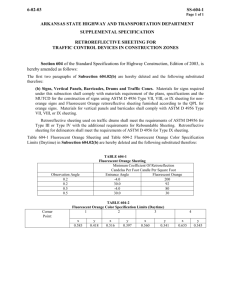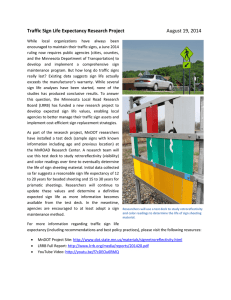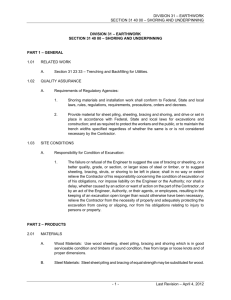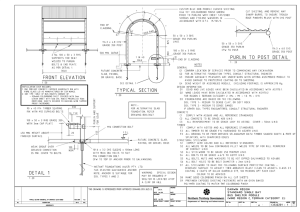Adhesive Waterproof Sheeting for Preventing Water Leakage into
advertisement
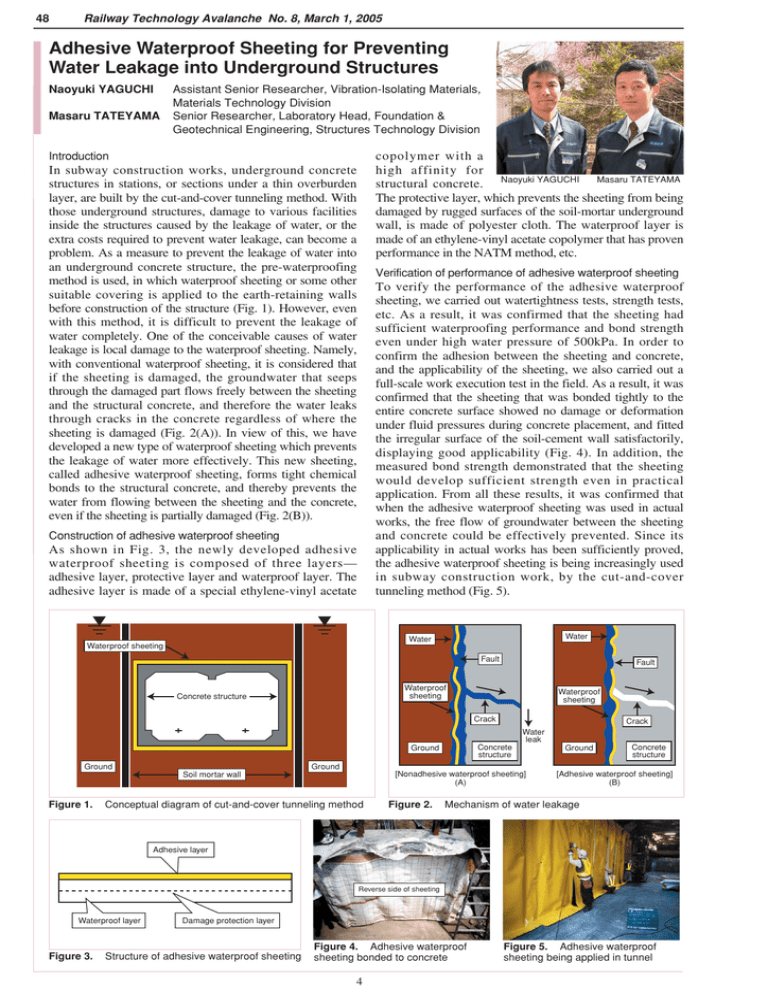
48 Railway Technology Avalanche No. 8, March 1, 2005 Adhesive Waterproof Sheeting for Preventing Water Leakage into Underground Structures Naoyuki YAGUCHI Masaru TATEYAMA Assistant Senior Researcher, Vibration-Isolating Materials, Materials Technology Division Senior Researcher, Laboratory Head, Foundation & Geotechnical Engineering, Structures Technology Division copolymer with a high affinity for structural concrete. Naoyuki YAGUCHI Masaru TATEYAMA The protective layer, which prevents the sheeting from being damaged by rugged surfaces of the soil-mortar underground wall, is made of polyester cloth. The waterproof layer is made of an ethylene-vinyl acetate copolymer that has proven performance in the NATM method, etc. Introduction In subway construction works, underground concrete structures in stations, or sections under a thin overburden layer, are built by the cut-and-cover tunneling method. With those underground structures, damage to various facilities inside the structures caused by the leakage of water, or the extra costs required to prevent water leakage, can become a problem. As a measure to prevent the leakage of water into an underground concrete structure, the pre-waterproofing method is used, in which waterproof sheeting or some other suitable covering is applied to the earth-retaining walls before construction of the structure (Fig. 1). However, even with this method, it is difficult to prevent the leakage of water completely. One of the conceivable causes of water leakage is local damage to the waterproof sheeting. Namely, with conventional waterproof sheeting, it is considered that if the sheeting is damaged, the groundwater that seeps through the damaged part flows freely between the sheeting and the structural concrete, and therefore the water leaks through cracks in the concrete regardless of where the sheeting is damaged (Fig. 2(A)). In view of this, we have developed a new type of waterproof sheeting which prevents the leakage of water more effectively. This new sheeting, called adhesive waterproof sheeting, forms tight chemical bonds to the structural concrete, and thereby prevents the water from flowing between the sheeting and the concrete, even if the sheeting is partially damaged (Fig. 2(B)). Verification of performance of adhesive waterproof sheeting To verify the performance of the adhesive waterproof sheeting, we carried out watertightness tests, strength tests, etc. As a result, it was confirmed that the sheeting had sufficient waterproofing performance and bond strength even under high water pressure of 500kPa. In order to confirm the adhesion between the sheeting and concrete, and the applicability of the sheeting, we also carried out a full-scale work execution test in the field. As a result, it was confirmed that the sheeting that was bonded tightly to the entire concrete surface showed no damage or deformation under fluid pressures during concrete placement, and fitted the irregular surface of the soil-cement wall satisfactorily, displaying good applicability (Fig. 4). In addition, the measured bond strength demonstrated that the sheeting would develop sufficient strength even in practical application. From all these results, it was confirmed that when the adhesive waterproof sheeting was used in actual works, the free flow of groundwater between the sheeting and concrete could be effectively prevented. Since its applicability in actual works has been sufficiently proved, the adhesive waterproof sheeting is being increasingly used in subway construction work, by the cut-and-cover tunneling method (Fig. 5). Construction of adhesive waterproof sheeting As shown in Fig. 3, the newly developed adhesive waterproof sheeting is composed of three layers— adhesive layer, protective layer and waterproof layer. The adhesive layer is made of a special ethylene-vinyl acetate Water Water Waterproof sheeting Fault Fault Waterproof sheeting Concrete structure Waterproof sheeting Crack Crack Water leak Concrete structure Ground Ground Concrete structure Ground [Nonadhesive waterproof sheeting] (A) Soil mortar wall Figure 1. Ground Conceptual diagram of cut-and-cover tunneling method Figure 2. [Adhesive waterproof sheeting] (B) Mechanism of water leakage Adhesive layer Reverse side of sheeting Waterproof layer Figure 3. Damage protection layer Structure of adhesive waterproof sheeting Figure 4. Adhesive waterproof sheeting bonded to concrete 4 Figure 5. Adhesive waterproof sheeting being applied in tunnel
